"Golden Books" - Los Alamos and Cornell
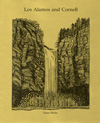 |
Los Alamos and Cornell
|
 |
 |
![]()
Fermi National Accelerator Laboratory
Batavia, Illinois
Operated by Universities Research Association, Inc.
Under Contract with the United States Department of Energy
Introduction
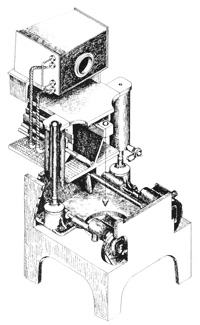 Hans Bethe, an international pioneer in the study of theoretical physics, was born in 1906 in Strassburg, Germany. He studied in Frankfurt and Munich and worked with Enrico Fermi in Rome. Following his teaching positions in the German universities at Stuttgart, Munich, and Tubingen and the British universities at Manchester and Bristol, he emigrated to the United States in 1934 to join the faculty of Cornell University where he continues today.
Hans Bethe, an international pioneer in the study of theoretical physics, was born in 1906 in Strassburg, Germany. He studied in Frankfurt and Munich and worked with Enrico Fermi in Rome. Following his teaching positions in the German universities at Stuttgart, Munich, and Tubingen and the British universities at Manchester and Bristol, he emigrated to the United States in 1934 to join the faculty of Cornell University where he continues today.
During the war years Bethe served as Head of the Theoretical Physics Division of the Manhattan Project in Los Alamos and worked closely with his Cornell colleague, Robert Rathbun Wilson. As also happened with Wilson, Bethe's social conscience since those years roused him to help build public awareness of the growing threat of nuclear weapons and to promote peaceful uses of atomic energy. As a member of President Eisenhower's Science Advisory Committee, Bethe participated in international discussions on the Discontinuance of Nuclear Weapons Tests in the 1950s.
Bethe's research and contributions to his physics have won him much respect in the minds of his colleagues. He is a foreign member of the Royal Society of London and member of the US National Academy of Sciences. Among his many honors are the US Atomic Energy Commission's Enrico Fermi Prize in 1961 and the 1967 Nobel Prize for Physics for his research on the production of energy in stars. He was awarded the National Medal of Science in 1976.
In 1978 Bethe presented a talk, "Los Alamos and Cornell," at a symposium honoring Fermilab's first director. It is reprinted here as one of a select collection of historically significant talks and papers celebrating the Laboratory's twenty-fifth anniversary.
Los Alamos and Cornell
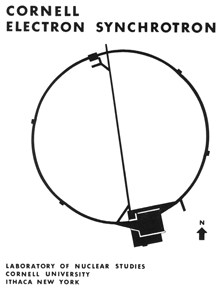 How did Robert Wilson enter my life? He wrote me a letter to tell me that I was wrong, or at least incomplete in a calculation I had done showing that particles in a cyclotron could not be focused above a certain energy, perhaps 40 MeV. This happened when Ernest Lawrence was collecting money to build a cyclotron which would go to a much, much higher energy, so my name was not popular at Berkeley. There was a graduate student at Berkeley, by the name of Bob Wilson, who was working on focusing in the cyclotron. He had noticed one point which M. E. Rose and I had not, namely that there is focusing by the electrostatic field between the D's of the cyclotron. We had only looked at the magnetic focusing, so there was first an exchange of letters between him and me, and then the next more senior person came in, namely Ed McMillan, and then finally Ernest Lawrence. He said, "Well, never mind what you say, there is always a way to skin a cat." The cat was skinned eight years later by Ed McMillan, who invented the FM cyclotron.
How did Robert Wilson enter my life? He wrote me a letter to tell me that I was wrong, or at least incomplete in a calculation I had done showing that particles in a cyclotron could not be focused above a certain energy, perhaps 40 MeV. This happened when Ernest Lawrence was collecting money to build a cyclotron which would go to a much, much higher energy, so my name was not popular at Berkeley. There was a graduate student at Berkeley, by the name of Bob Wilson, who was working on focusing in the cyclotron. He had noticed one point which M. E. Rose and I had not, namely that there is focusing by the electrostatic field between the D's of the cyclotron. We had only looked at the magnetic focusing, so there was first an exchange of letters between him and me, and then the next more senior person came in, namely Ed McMillan, and then finally Ernest Lawrence. He said, "Well, never mind what you say, there is always a way to skin a cat." The cat was skinned eight years later by Ed McMillan, who invented the FM cyclotron.
My second encounter with Bob Wilson was in Princeton about 1940 when he was working on the range energy relation and made the best measurements up to that time on the range energy relation of protons. He also investigated quite a number of proton-induced nuclear reactions. All this interested me very much, and we had very interesting conversations. I couldn't now reproduce details, and neither, I think, could he. Then came World War II and Wilson, like many of us, felt that he should contribute something to the War effort. He invented a machine which was called the Isotron. I don't know to the present day just how it is made, but it was supposed to separate the uranium isotopes U235 and U238. I have the suspicion, but I don't really know, that a very similar principle is now being used at TRW for isotope separation. Since I don't know either device, my comparison may be quite off resonance.
The work on the Isotron was stopped by decree of the higher-ups in the uranium project, partly because Wilson was necessary in what seemed to be a more vital part of the uranium business, namely Los Alamos, where he became a group leader. Harvard had a cyclotron, which I think had never worked. Wilson (in the name of Los Alamos) stole it and his group made it go. Wilson brought with him from Princeton a large number of faithful people and added more from other places, including McDaniel from Cornell, who became Wilson's successor at Cornell some years ago. This group was an extraordinary group; not only did they do lots of experiments, probably more than most other groups, but in addition they took an interest in absolutely everything in the laboratory. I remember one day at a meeting of what was called the Coordinating Council, which was the assembly of all group leaders in Los Alamos, our director Oppenheimer said, "Well, everybody should take an example from Wilson's group. They know everything in the Laboratory, and are interested in solving the problems of everybody else." At one time it became necessary in Los Alamos to have a second experimental Physics Division, one not concerned with nuclear physics, but concerned with observations of the assembly of model nuclear weapons. The man who, until that time, was the head of the Physics Division, Bob Bacher, was shifted to be the leader of this new division, and it was necessary that the Nuclear Experimental Division get a new head. There were several group leaders; of course, the one who was chosen to head the division was the youngest of them, Bob Wilson. This choice was clearly approved by all the other group leaders, including even Emilio Segre, who was very senior to Bob, and who does not easily recognize anybody else's authority.
At the end of the War, we all dispersed, or most of us did. Somebody said, "Robert Wilson has as many offers from universities as a dog has fleas." Cornell did not add to the fleas at that time; instead of that, Bob repaid the debt to Harvard, and, having stolen a rather primitive cyclotron from Harvard, he now set out to build there a much bigger and better one. However, history repeated itself. The director of our Nuclear Studies Lab at Cornell, Robert Bacher, who had been the first leader of the Physics Division at Los Alamos, again was called away, this time to become the scientific member of the first Atomic Energy Commission. Again it was obvious that the person who should replace him was just the same as before, Bob Wilson. It took a great deal more effort this time to persuade Bob to fulfill his manifest destiny. He had a joint project at Harvard, and both Dale Corson and I spent many long conversations on the telephone to persuade him to come to Cornell. Why he decided to come I don't know. It certainly was much to our advantage that he did, and maybe he even enjoyed it.
At the time, Cornell had decided to build a synchrotron for accelerating electrons to 300 MeV; 300 MeV was chosen because we thought we had to produce two mu mesons, whose total mass would be 210 MeV. Well, we were wrong about that, but we were right about choosing the energy. We were not alone in choosing that energy. There were, I think, three other places which were doing the same thing, and by that time Lawrence's cat had been skinned. McMillan and Veksler had discovered the principle of phase stability which makes it possible to have synchrotrons or synchrocyclotrons, and such machines were going up all around the country. It was fairly easy to build these machines but not so easy to make them go. When ours at Cornell had been built and when it was finally all assembled, it wouldn't work at all. And neither would the one at Berkeley. There was great consternation and it wasn't until Dale Corson measured the magnetic field of our synchrotron that the cause was discovered: The magnetic field was supposed to be 8 G all around the circuit. Instead, it was maybe +20 in one place and -10 in some other place; the electrons could hardly be blamed for losing their way around this mess. It was Bob Wilson who found the solution: eliminate this residual magnetic field as much as possible by raising the field to a rather low level electromagnetically, then getting down to zero field, and then repeating this many times so as to demagnetize the iron. Hardly had he done this, when the electrons merrily started to circle and could even be accelerated. No sooner accomplished than he phoned his old friend, Ed McMillan, and told him how to do it. And this, as he later said in print, may have been a mistake, because McMillan had beautiful radio-frequency acceleration systems, so that once he had electrons at all, they got accelerated to 300 MeV, while at Cornell all we could do was 200.
Well, 200 MeV is more than the mass of a π meson by quite a lot, so we should have been able to observe mesons, and indeed we did observe some, but very few, and especially we could not observe any neutral π mesons. At 300 MeV, the neutral π mesons are abundant; so York and Panofsky, using McMillan's synchrotron, discovered the π° in short order, and found that it was produced in very large quantity. However, it was useful to have our machine so miserable, because that way it was found out that the cross section for π mesons increases enormously from 200 MeV to 300, and particularly so for π°'s. So this was the discovery of the resonance now known as the delta resonance, or the 3,3 resonance of the nucleon. Brueckner was the first theorist to recognize this resonance clearly. The resonance was then established close to here, at Chicago, by Fermi's group using, not electrons, but protons as the particles to generate the π mesons. Fermi himself, I think, never believed the resonance, although it was there for everybody to see. It became even clearer, however, when the synchrotron at Cal Tech got to about 500 MeV, and one could follow the cross section through a beautiful maximum and down again on the other side, to show that really there was a resonance. All this activity at energies above his machine's capacity was of course something Bob Wilson couldn't tolerate for long, and very soon he set out to increase "his" energy, but let me pause for a moment.
When we first set out to build the 300-MeV synchrotron, we had two things in mind. The first was that synchrotrons clearly were quite a lot cheaper than cyclotrons to accelerate protons, and we didn't think that the government would give us enough money to build a big cyclotron at Cornell. Berkeley, being a much more famous laboratory, was in a better position to get enough money. So first we chose the synchrotron because it was easier and cheaper. Second, we thought that the interaction between electrons and hadrons was simple-it was just an electromagnetic interaction. We thought we understood electro-magnetic interaction, whereas we thought it would be much more difficult to understand the strong interactions, and this situation hasn't really changed. In fact, it has changed so little that many people now believe that indeed electron machines are especially useful at very high energy, in the many-GeV region, just because of the simple interaction; and I remind you of the results from SLAC and DESY-the colliding beams, electrons and positrons, which offer relatively simple situations to create new hadrons, psi particles and so forth. But, as far as the cost is concerned, the shoe is now on the other foot. To build a machine for 500-GeV protons costs $243 M, as we learned this morning, but you certainly couldn't get a 500-GeV beam of electrons for that money. Well, maybe Bob will invent a way to do so. So I think now people would love to find a way to make electrons at high energy as cheaply as protons at the same energy.
I wanted to talk about the research that went on at Cornell, and I want to mention a couple of things which are not high-energy particle physics. One is that the Cornell synchrotron was used by DeWire and collaborators to measure very accurately the pair production cross section. This interested me personally very much because I had calculated it a few years earlier with Heitler, and it was shown that indeed the cross section behaved the way it ought to as a function of energy. In particular, it went up logarithmically with energy, up to a certain point, and then it saturated which was due to screening of the electric field of the nucleus by the electrons. I may mention parenthetically that when Heitler and I wrote that paper, Heitler would never believe screening would give saturation. Another point was that the cross section was not exactly proportional to Z². After all, Z² is the Born approximation and why should that be right for lead? But I had a graduate student at the time, Maximon, who calculated the deviations from Z² and found, I am happy to say, something which was in very close agreement with the experimental results on the pair production cross section.
The second point I want to mention outside of particle physics is the quantitative measurement of the synchrotron radiation in our synchrotron, which was done by Corson. Synchrotron radiation is one of the beautiful ways to prove special relativity theory. Of course, the most beautiful proof today is the lifetime of the ç meson in the storage ring at CERN, which gives the time dialation to an accuracy of a percent or so, and if anybody still doubts the twin paradox, he only needs to look at these measurements to be convinced otherwise. Synchrotron radiation is a nuisance, because it means that you have to apply an awful lot of energy to just keep the electrons at constant speed and even more to accelerate them against the radiation. It is a nice way to show that the velocity of an electron of, let us say, 10 GeV is very close to the velocity of light. Just for fun and in order to give a talk on special relativity the other day, I calculated that the difference between the velocity of our electrons at Cornell of 10 GeV and the velocity of light is 25 cm/sec. That's a very, very slow walk. At Stanford it's 6 cm/sec. Now what consequence does it have that the velocity is near the velocity of light? The consequence is that light emitted by an electron at various points of its path is nearly in phase, because the electron goes almost fast enough to catch up with its own radiation. Therefore there is a very long distance over which the emitted light is in phase, and this distance, of course, is inversely proportional to the difference, c-v. This tells you that the electric field which you've produced by synchrotron radiation is proportional to 1/(c-v), and this in turn is proportional to γ², the energy squared, and therefore the intensity is proportional to γ4, as everybody knows who builds a synchrotron. By measuring this radiation intensity you measure directly the difference c-v, and this was done for the first time accurately at Cornell by Corson, who found very close agreement with the calculated value. So this is, if anybody needs it, still another proof of special relativity.
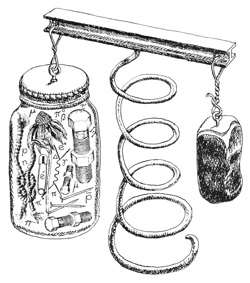 The third point was not done on the synchrotron, but it was done by Wilson himself, and that was Delbruck scattering, the scattering of light by a potential field, and of course the potential field you choose is the Coulomb field of a heavy nucleus, in this case lead. This scattering is extremely small, but it had been calculated, and it was interesting to measure it. Unfortunately, there are other scatterings which are bigger-one is the Thomson scattering by the nucleus, and the other is the Rayleigh scattering by the K electrons of the heavy atom. Well, we calculated all this, and Bob went to work to measure it using Co60 γ rays, of energy 1.3 MeV. Delbrück scattering happens to be a maximum at just about twice the mass of the electron. Wilson found what seemed to be a definite indication that Delbruck scattering was there, and was just about the magnitude calculated. I think most people have forgotten that.
The third point was not done on the synchrotron, but it was done by Wilson himself, and that was Delbruck scattering, the scattering of light by a potential field, and of course the potential field you choose is the Coulomb field of a heavy nucleus, in this case lead. This scattering is extremely small, but it had been calculated, and it was interesting to measure it. Unfortunately, there are other scatterings which are bigger-one is the Thomson scattering by the nucleus, and the other is the Rayleigh scattering by the K electrons of the heavy atom. Well, we calculated all this, and Bob went to work to measure it using Co60 γ rays, of energy 1.3 MeV. Delbrück scattering happens to be a maximum at just about twice the mass of the electron. Wilson found what seemed to be a definite indication that Delbruck scattering was there, and was just about the magnitude calculated. I think most people have forgotten that.
Now this was Wilson as an experimenter, but I suppose that very few of you know that he is also a theoretical physicist. One of his theoretical papers was a calculation of the development of a shower in a heavy material such as lead, using the cross sections for emission of radiation, and for pair production. When you have a material such as lead, the cross sections change very much with energy, so you cannot just use the usual Bhabba-Heitler radiation shower theory. Wilson knew that you have to take into account the real variation of cross section, and for this he used a computer. This was in 1952 when computers were not very plentiful, so he made one himself using an erector set, and it worked very well. With this he calculated the shower production, which then was used to make his precision quantameter where he uses the energy of the pair electrons to measure the energy of quantum radiation.
Another theoretical paper he did with me. He had the idea, and I did the algebra. This paper was about the scattering of pions by protons. The cross section for pion production had been measured, and the mean free path had also been measured at Cornell for pions of various energies in nuclear matter. In particular, for pions of about 50 MeV, which we could easily make because we had low-energy electrons. You find that the mean free path of these pions is very long; it's about 4 fermi. In addition, the Cornell experimenters were able to measure the diffraction scattering of pions from a nucleus, and if you know the mean free path for collisions inside the nucleus and also know the diffraction scattering, you can deduce from this the amplitude of scattering by a single nucleon. Of course, from a single nucleon you get scattering in all directions, but only some of that adds coherently to give you the scattering by the nucleus, so what you want to calculate really is the potential of the pion in nuclear matter. Bob Wilson told me how to do that from the scattering amplitude, and so I set to work and did the actual algebra, and we published the paper together. I think it's the only paper we published together, which I find very regrettable. We concluded that the coherent scattering amplitude of nucleons for mesons at this low energy was very small, and while our numbers don't hold up at present, on the whole our result was qualitatively correct: The scattering is very small. The scattering in the p state is still very small because you are far below the resonance, and the scattering in the s state is also small, because the scattering amplitude has opposite signs for isospin 3/2 and 1/2, so that the average scattering, and hence the coherent scattering, is indeed very small.
Not all the work of the director of the Nuclear Laboratory was in physics. We had an administration, and I'm not sure whether it was the dean or the president, one of them inquired, what on earth were the physicists doing that cost the university so much money? I suppose this is somewhat familiar to some of you, and so, let us say it was the dean who said, "Now please make me an organization chart." There were two parts to the Physics Department-one was the solid state part under Lloyd Smith, and the other was the Nuclear Laboratory under Bob Wilson. So two weeks later, when we faced the dean again, Lloyd Smith presented a beautiful organization chart with lists of people and of different research being done and who was doing what and who was teaching what and so on, and it went over a great big page, maybe several pages. Bob Wilson had his organization chart made in the machine shop, and it looked like this:
There was a support which was a Cornu spiral, just for beauty's sake. On top of this was a balance, a rather husky piece of metal, and at its two ends there were weights. At one end were some lead weights which represented the dead weight of the faculty. At the other end were all the positive factors which made the Lab go. There were products of the machine shop like screws and electronic tubes (in those days there were still tubes), and there was something symbolizing the students, perhaps a book. Most important, there was a dollar bill, the support from the Office of Naval Research, which should be praised once more as one of the most generous and least troublesome sponsors of research that ever existed. One of the strange phenomena was that this dollar bill stayed in that glass jar for years and nobody ever took it away, except once or twice somebody borrowed it for lunch and then gave it back.
I mentioned much earlier the Caltech synchrotron which went to about 500 MeV and got the first full picture of the resonance. Obviously this didn't let Wilson sleep. He got two ideas, both stimulated by some rumors he heard from Brookhaven. One was a rumor and the other was fact. The rumor was that Brookhaven had operated their Cosmotron with a gap of, I think, two inches instead of six inches. Wilson said to himself, "Well, if they can do that, our machine is much smaller, so we can do it with a one-inch gap." This tremendously decreased the size of the magnet and the size of the doughnut containing the beam of electrons. Everything got cheaper by a factor of ten or more. And so the next Cornell synchrotron was designed with this in mind. Later, Wilson writes, he discovered on visiting Brookhaven that nobody had ever heard of operating the Cosmotron with a two-inch gap. The second news from Brookhaven was for real, and that was strong focusing. This immediately seemed most plausible, and Wilson said, "Of course, our machine is much simpler than the Brookhaven machine of 30 GeV which was being constructed, so let's try it out with electrons." And indeed, the first experiments with strong focusing were done by Wilson and his collaborators at Cornell showing that the principle really worked. In this manner, he and the others designed a second synchrotron, which started out with 1.2 GeV, and then gradually went up to 2 GeV. This one worked almost immediately. Nowadays machines do seem to work very quickly after they are built, in contrast to the first synchrotrons. I think the main secret is that one injects now at high energy so that one avoids the irregularities of the magnetic field at injection.
But that was not the only secret, and I will now quote from a paper he wrote which says, "If we had any secret in constructing machines cheaply and rapidly, it was our willingness to make mistakes." I think this is the example which everyone should be urged to follow. I know of one case in nuclear reactor development, which gives a beautiful example of the truth of this statement. For many years the United States has wanted to develop a breeder reactor using high-energy neutrons, and as a first step to do this they wanted to have a test facility at Hanford in Washington, known as the Fast Flux Test Facility. I believe it was to be finished in 1969. I believe it is now scheduled to be finished in September of this year, 1979. It overran by ten years and it overran by, I think, a little more than a factor of ten in cost. The reason for this was that the AEC, at the time, decided that no mistake must be made in constructing this facility. Everything must be designed in such a way that it is absolutely impossible to make a mistake. In my opinion, there is no greater mistake possible than trying to make no mistake.
Well, the 1- and 2-GeV synchrotrons went into operation. Wilson had the satisfaction to discover in collaboration with many other people at Cornell the next resonance, and then still another, showing many isobaric states of the proton. Nowadays there are still many more, and you can read the little book which will give you a list of lots and lots of excited states of the nucleon. This is what V. Weisskopf calls, "the third spectroscopy," namely that in the GeV range, and this morning we heard from Professor Paul how similar the three spectroscopies actually are. That doesn't make it less interesting to work on the GeV spectroscopy.
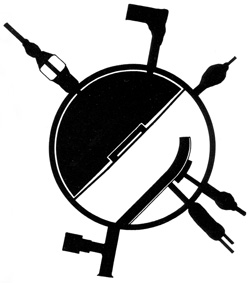 Of course, while the experimental results kept coming in, there was again ambition in the entire Cornell group, and especially in Bob Wilson, to go to the next step, to yet higher energy. But they said, "This time we'll take the easy way, we'll let an industrial company build it for us." They would simply copy the Cambridge Electron Accelerator, which was being built at the same time. But Cornell could get money only for a small copy of that at CEA, a copy that was to give 3 GeV and was to cost about $10 M. Cornell was supported by the NSF which was quite willing to provide the $10 M. But now the entire experimental group at Cornell, very much infected by the Wilson spirit, decided this was really a bore to have their machine built by an industrial company: "It will take a long time, it won't give us very much energy, we are now at 2 GeV with our synchrotron which was built for 1 GeV, so why don't we do something more interesting?" So they designed a much bigger ring, a much bigger synchrotron, which first gave 10 and later 12 GeV instead of 3 for the same money, $10 M. Well, NSF insisted maybe $10 M was not really quite enough for this bigger machine and asked why don't you take $12 M? I'm told (I hope the information is correct) that it took a lot of persuasion on the part of our vice-president for research to persuade Bob Wilson to accept the extra $2 M. And of course it was built, I suppose, for $11.5 M. I don't know how Bob Wilson is able not only to calculate the cost of a machine so accurately, but also the rate of inflation, so I think one of the things he might now go into is economics prediction of the inflation rate? How about it? In the midst of constructing this machine, gob Wilson, as you all know, was asked to come here as the director of the National Accelerator Laboratory. Nobody at Cornell liked that idea but it was very clear, certainly to me, that there was no choice for him, that he had to go. And I think in retrospect maybe we don't even begrudge him this decision. This morning you heard from Leon Lederman how it went here at the National Accelerator Laboratory, how Bob Wilson predicted the time when the machine would work, and the money that would be spent for it, and that he never met the goal, spending $243 M instead of $258 M.
Of course, while the experimental results kept coming in, there was again ambition in the entire Cornell group, and especially in Bob Wilson, to go to the next step, to yet higher energy. But they said, "This time we'll take the easy way, we'll let an industrial company build it for us." They would simply copy the Cambridge Electron Accelerator, which was being built at the same time. But Cornell could get money only for a small copy of that at CEA, a copy that was to give 3 GeV and was to cost about $10 M. Cornell was supported by the NSF which was quite willing to provide the $10 M. But now the entire experimental group at Cornell, very much infected by the Wilson spirit, decided this was really a bore to have their machine built by an industrial company: "It will take a long time, it won't give us very much energy, we are now at 2 GeV with our synchrotron which was built for 1 GeV, so why don't we do something more interesting?" So they designed a much bigger ring, a much bigger synchrotron, which first gave 10 and later 12 GeV instead of 3 for the same money, $10 M. Well, NSF insisted maybe $10 M was not really quite enough for this bigger machine and asked why don't you take $12 M? I'm told (I hope the information is correct) that it took a lot of persuasion on the part of our vice-president for research to persuade Bob Wilson to accept the extra $2 M. And of course it was built, I suppose, for $11.5 M. I don't know how Bob Wilson is able not only to calculate the cost of a machine so accurately, but also the rate of inflation, so I think one of the things he might now go into is economics prediction of the inflation rate? How about it? In the midst of constructing this machine, gob Wilson, as you all know, was asked to come here as the director of the National Accelerator Laboratory. Nobody at Cornell liked that idea but it was very clear, certainly to me, that there was no choice for him, that he had to go. And I think in retrospect maybe we don't even begrudge him this decision. This morning you heard from Leon Lederman how it went here at the National Accelerator Laboratory, how Bob Wilson predicted the time when the machine would work, and the money that would be spent for it, and that he never met the goal, spending $243 M instead of $258 M.
We are here to honor Bob Wilson, but what I mainly want to do is to say that he would be an example, not only to all of us, but to the country. At present the United States is pervaded by a philosophy of not taking any risks, not making any mistakes. This paralyzes any decision; it paralyzes our enterprise. We are this year celebrating the hundredth anniversary of the discovery of the electric light. A hundred years ago, the United States was a leading country in enterprise, and even more so 50 years ago, about the time when I came here. I'm sorry to see that the spirit of enterprise has gone out of this country. Enterprise still is alive in such people as Bob Wilson and in the people who are here in this room, some working here at Fermilab, some at other places. But the whole nation should learn from Bob Wilson, "do not fear to make mistakes, but be resourceful enough to correct the mistakes when they are discovered." It is far less risky to do this than trying to avoid taking any risk.
Thanks
Sue Grommes ● Adrienne Kolb ● Rocky Kolb ● Bruce Chrisman
John Peoples ● Robert R. Wilson ● Leon M. Lederman ● Jane S. Wilson
S. Chandrasekhar ● Leonard Euler's Illustrator ● Angela Gonzales
Pablo Picasso ● East Indian Mythology ● 5th Century B.C. Athenian Vase
Painters and Potters ● Hans Bethe ● Fermilab Photography ● Al Johnson
John Keats ● Emily Dickinson ● Jean Lemke ● Marcel Proust ●
Chocolate
Lillian Hoddeson ● William Shakespeare
● Norman F. Ramsey
19th Century Illustration Depicting a Mechanical Universe
5th Century B.C. Greek Mythology ● Leonardo da Vinci
This publication was selected from the treasures of the Fermilab Archives.




